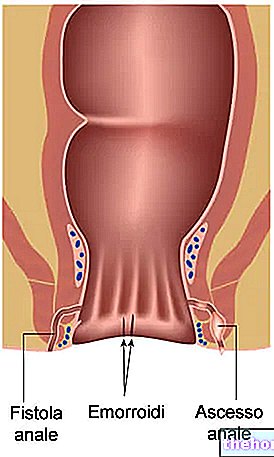See also: lactitol - Normase - Lactulose based laxative
Generality
Lactulose is an indigestible sugar of synthetic origin, traditionally used to solve constipation problems; it also finds application in the treatment of hepatic encephalopathy, a complication of advanced diseases affecting the liver (such as cirrhosis).

Laxative and prebiotic effects
From the chemical point of view, it is a disaccharide formed by a molecule of D-fructose and one of D-galactose. Commercially, lactulose is often sold in the form of a yellow-orange syrup indicated for the treatment of constipation. In fact, after escaping the digestive action of intestinal disaccharidases, lactulose acts as an osmotic laxative, recharging in the intestinal lumen a sufficient quantity of water to soften the stool and stimulate peristalsis. The laxative action is however delicate. , so much so that lactulose is also recommended for children and the elderly (if dietary and behavioral changes have not produced the desired results).
After oral administration, lactulose reaches the colon unaltered, where it is catabolized by lactobacilli with the production of organic acids, such as lactic, acetic and formic acids. We therefore understand the prebiotic potential of this disaccharide, which inhibits the development of hostile intestinal flora, such as the putrefactive one, and creates favorable environmental conditions for the growth of that symbiont (in particular lactobacilli). Consequently, the integration of lactulose carries out a beneficial action for the whole organism.
Side effects include abdominal pain and cramps, bloating and flatulence; excessive use can cause diarrhea, loss of water and electrolytes. Lactulose is contraindicated in the presence of galactosemia, intestinal obstruction and ascertained hypersensitivity to this disaccharide or substances strictly related to it from a chemical point of view.
Lactulose and hepatic encephalopathy
The acidification of the colonic content induced by lactulose is also beneficial in the presence of hepatic encephalopathy, a neuropsychiatric syndrome due to the accumulation in the circulation of toxic substances, such as ammonia, coming from intestinal digestion and not adequately metabolized by the liver (in the healthy subject ammonia is transformed into urea in the hepatocytes and eliminated in the urine). Lactulose, hindering the growth of ammonia-producing bacteria (such as ". And coli) in favor of lactobacilli, and acidifying the colic content, can therefore be useful in the treatment of this pathology. In particular, the reduction of the colonic pH facilitates the conversion of ammonia (NH3) into the much less absorbable ammonium ion (NH4 +); if we add to all this the greater elimination of metabolites linked to the increase in peristalsis, lactulose creates a negative gradient in the colon whereby the ammonia present in the capillaries of the colonic mucosa diffuses into the lumen, with a consequent reduction in ammonia (concentration of the substance in plasma).
Lactulose Breath Test
The fermentation of lactulose by intestinal bacteria causes, after a certain time from its ingestion, an increase in the hydrogen content in the exhaled air. This element can be exploited in various diagnostic tests (called breath test) to investigate, for example, the oro-cecal transit time or the possible presence of a bacterial contamination syndrome of the small intestine (the microorganisms of the colon ascend to the terminal tract of the small intestine and colonize it, interfering with the absorption of nutrients and determining abdominal swelling and alvus disorders; in this case the lactulose breath test shows two peaks: one due to catabolism in the small intestine and one due to colonic fermentation).




























